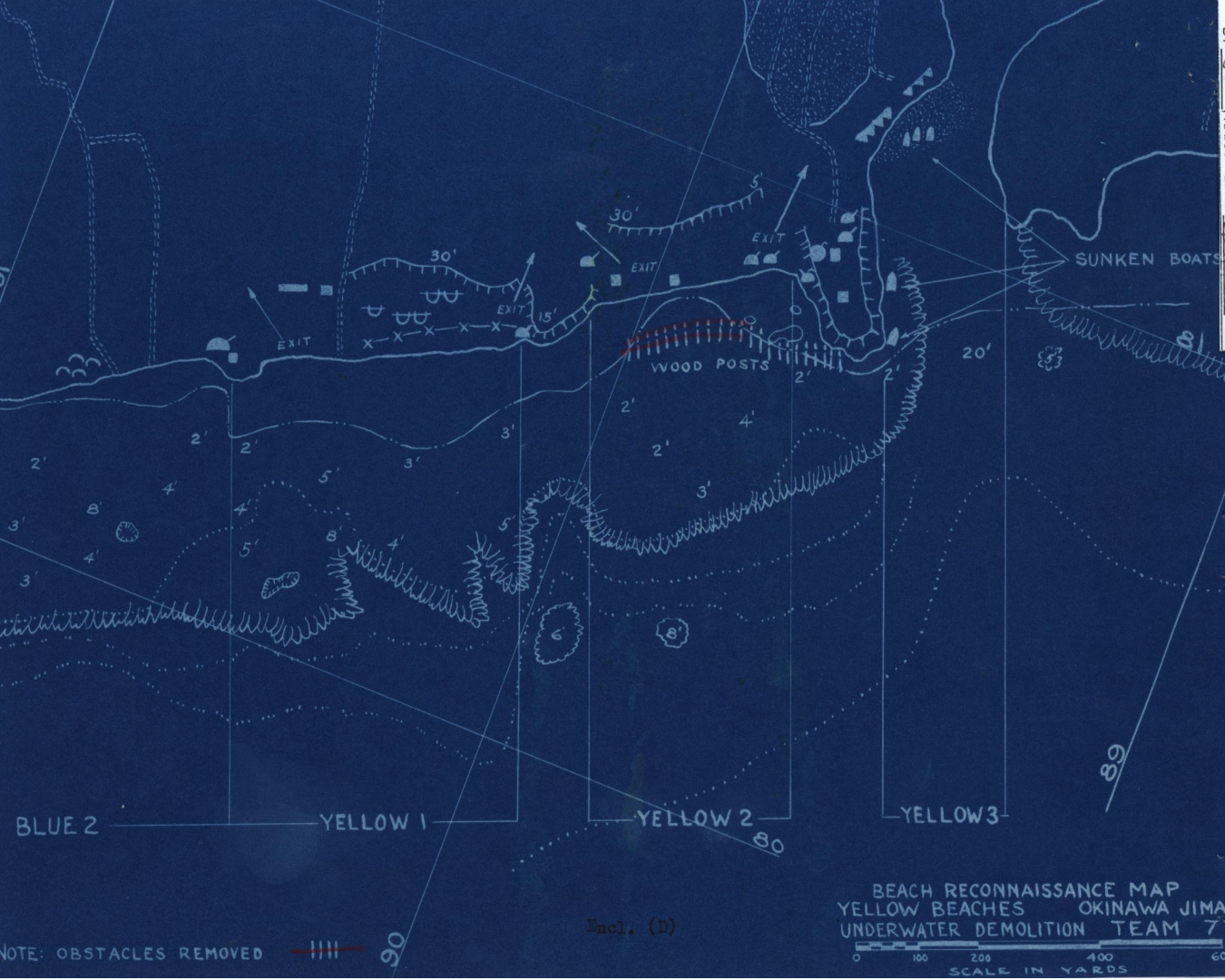Born from necessity, these UDTs would be critical in reconnaissance & shaping beach-heads before Allied landings
Born from the US Navy’s analysis of the amphibious landing disasters of WW1, it was recognized that there was a critical need for HUMINT (Human Intelligence) before large scale amphibious operations. This required specialized reconnaissance teams to go onto the beachheads before the landing to recon obstacles, defenses and guide the main landing force safely onto the beach.From this need emerged an early form of the UDTs in 1942 at Little Creek, VA.
The UDTs mission and use gradually evolved throughout WW2. For instance, in the weeks preceding the D-Day landings, the UDTs would sneak up at night to perform recon on German beach defenses. They would also be tasked with analyzing & destroying underwater defenses to clear paths for the landing crafts to get as close as possible to the beach.

However, it’s on the Pacific theater that the UDTs truly came into their own. There was an urgent need for underwater recon after the disaster of the Tarawa landing in Nov. 1943 - where underwater coral has caused massive issues for landing crafts. To that effect - the UDTs were to perform beach condition recon & removal of submerged obstacles (coral being the primary issue for the Pacific campaign).
For their first mission on the island of Kwajalein - the UDTs were initially made to wear their combat gear and had to be life-lined to their inflatable boat to make their observations. Conditions made it impossible to perform proper recon and the two-man team decided to get in their swimming trunks. They then managed to perform a complete recon of both Japanese defenses & underwater reefs undetected. Back from their mission, still in trunks - they reported their findings. This success led to a rethink of the UDTs entire ethos. The conclusion was that the only way for successful amphibious recon was to mimic what the men had done.

As the UDTs had now a clear mission & were free from “standard” military practice, they continued to grow throughout the war. Their missions also now included blasting paths to beachheads as they took on a more pro-active role in landings.

The culmination of the UDTs WW2 effort was the invasion of Okinawa involving 1000+ men (8 different UDTs). The first major challenge was the temperature difference with the rest of the Pacific campaign exposing the UDTs to hypothermia. Nonetheless, the UDTs performed reconnaissance, demolition at the landing beaches & feints to distract Japanese defenders. At this stage, the UDTs had started a “cold-water” training center and, increased the “physical standard” as the units started to become more professional and standardized. With the Japanese surrender, almost all teams were disbanded at the end of the war.

Amongst all this evolution in the UDT’s missions and the increased need for these teams, the Navy recognized the need for specialized equipment. The UDTs started with only swim trunks, dive masks and fins. As they refined both their techniques and stealth, UDTs used specialized paints to mimic the color of the water they would operate in.

For reconnaissance, they used plexiglass taped to their knees to record their observations. For demolition, the teams would use condoms to keep fuses, firing caps and matches dry underwater. And, in both cases, these teams needed reliable timekeeping. This prompted the USN Bureau of Ships (the procurement office at the time) to request for water-proof watches. The major US mil-spec watch brands of the time developed a new breed of combat watches: Dive Watches. Featuring a crystal welded directly onto the case and a screw-down crown cap, these were funky watches that like the UDTs, got the job done with whatever had been available back then. This design is what inspired our latest collection: the A-5 UDT. An homage to those orignal teams and their watches, the A-5 is a true reliable dive watch with all the modern innovations while retaining the character of the originals.









Leave a comment
This site is protected by hCaptcha and the hCaptcha Privacy Policy and Terms of Service apply.